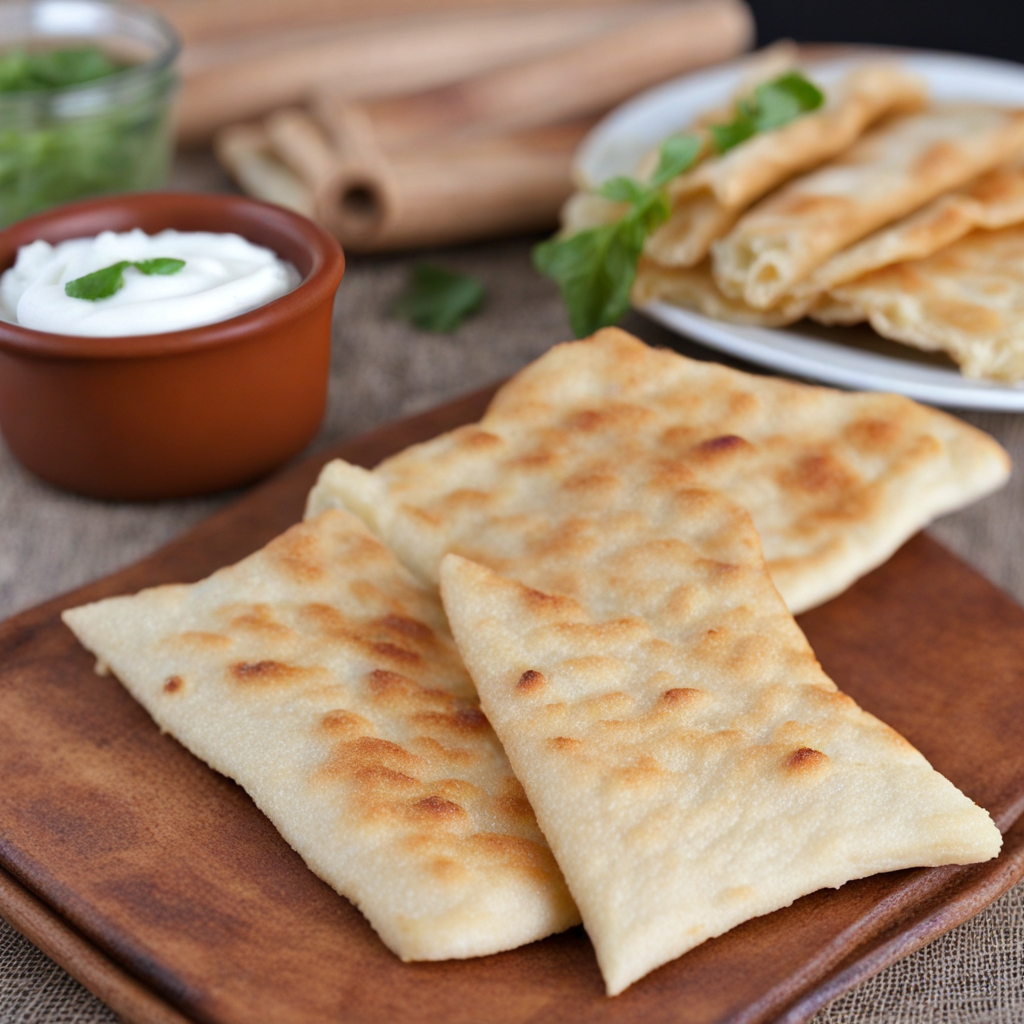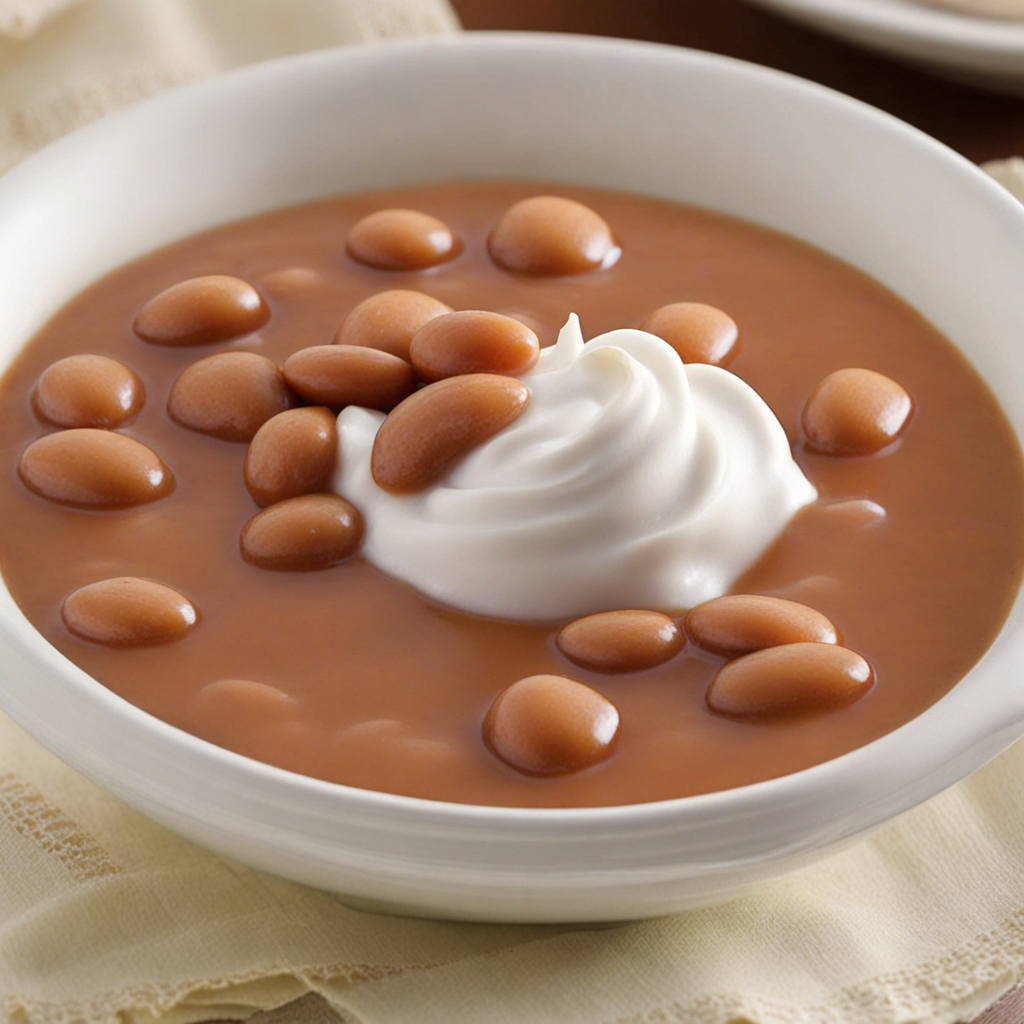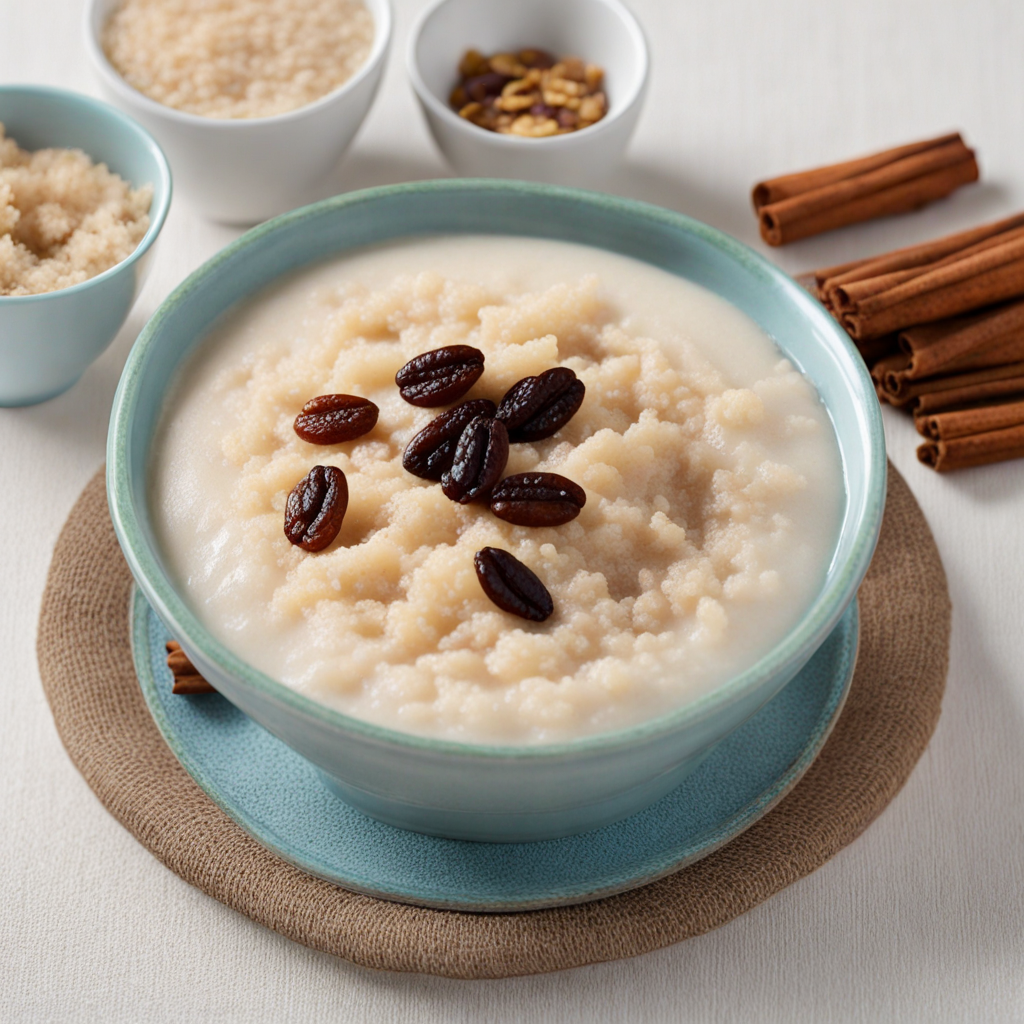Casabe
Casabe is a traditional flatbread originating from the Dominican Republic, made primarily from cassava, a starchy root vegetable. The preparation begins with peeling and grating the cassava to extract its juice, which contains toxic compounds. Once the juice is drained, the remaining pulp is dried and ground into a fine flour. This flour is then mixed with water to form a dough, which is shaped into thin rounds and cooked on a hot griddle until crispy and golden. The result is a versatile, gluten-free bread that carries a subtle nutty flavor and a pleasant crunch, making it a perfect accompaniment for a variety of dishes. In the Dominican culinary landscape, Casabe serves as a staple food, often enjoyed with stews, meats, and seafood. Its unique texture complements the richness of flavorful sauces, while its mild taste allows it to absorb the spices and seasonings of the accompanying dishes. Casabe can also be enjoyed on its own as a snack, sometimes paired with avocado, cheese, or a spicy salsa for an extra kick. Moreover, its durability makes it an excellent choice for outdoor picnics or as a travel-friendly option for those exploring the vibrant flavors of the Caribbean. Beyond its deliciousness, Casabe holds cultural significance for the Dominican Republic, symbolizing the resilience and creativity of its people. Historically, it was a food of the indigenous Taíno people and has since evolved into a beloved component of Dominican cuisine. Today, it is celebrated not only for its taste but also for its health benefits, being low in calories and high in carbohydrates. Whether you're savoring it at a local eatery or trying your hand at making it at home, Casabe offers a delightful, crunchy experience that invites food lovers to explore the rich culinary heritage of the Dominican Republic.
How It Became This Dish
Casabe: The Crunchy Legacy of the Dominican Republic #### Origins: The Indigenous Roots Casabe, a traditional flatbread made from cassava (yuca), holds a special place in the culinary heritage of the Dominican Republic. Its origins trace back to the indigenous Taíno people, who inhabited the Caribbean long before European contact. The Taínos cultivated cassava, a starchy root vegetable that was a staple in their diet. They discovered that by peeling, grating, and then drying the cassava, they could create a versatile flour which could be transformed into a durable and nutritious flatbread. The word "casabe" itself is derived from the Taíno term "cassava," highlighting the deep-rooted connection between the food and the native culture. The process of making casabe is labor-intensive but ingenious. The Taínos would first extract the toxic compounds from fresh cassava, which contains cyanogenic glycosides, and then grate it into a pulp. This pulp was then pressed to remove excess moisture, dried in the sun, and finally cooked on a flat surface over an open flame, resulting in a crispy, golden-brown flatbread. #### Cultural Significance: A Symbol of Resilience Casabe is more than just food; it is a symbol of resilience and adaptability. For the Taíno, it was a vital source of sustenance that could be stored for long periods, making it an essential item for travel and trade. Its durability allowed it to survive various challenges, including colonial invasions and the subsequent decline of the indigenous population. As the Spanish colonizers arrived in the late 15th century, they encountered the Taíno and their culinary practices. The introduction of cassava to the Old World would eventually lead to its cultivation in other tropics. However, the Taíno people faced tremendous hardships due to disease, enslavement, and cultural assimilation. Despite these challenges, casabe survived, becoming a staple among the enslaved Africans brought to the island who adapted the recipe and incorporated it into their diets. In Dominica, casabe evolved beyond its indigenous roots, absorbing influences from African, Spanish, and later, Haitian cuisines. This adaptability speaks to the resilience of the Dominican people, who have maintained their connection to their indigenous heritage while also embracing new influences. #### Development Over Time: From Tradition to Modernity As time progressed, the methods and uses of casabe evolved. Traditionally, it was consumed as a side dish, often paired with stews, meats, and vegetables, serving as a gluten-free alternative to bread. In the Dominican Republic, casabe remains a fundamental part of the national diet, often enjoyed with dishes such as sancocho (a hearty stew) or simply with butter or cheese. In the 20th century, the commercial production of casabe began to rise, leading to its availability in supermarkets and local markets. Modern technology allowed for the mass production of casabe, making it more accessible to a broader audience. While traditional methods of production still exist, many Dominican families now purchase commercially produced casabe, which has led to a slight decline in artisanal methods. Despite these changes, the essence of casabe remains. It is still made with the same care and respect for the ingredients, and many families continue to uphold the traditional methods during special occasions and family gatherings. Festivals celebrating Dominican heritage often feature casabe, reinforcing its status as a cultural icon. #### Contemporary Uses: Reinventing Tradition In recent years, there has been a resurgence of interest in traditional Dominican foods, including casabe. This revival is driven by a growing awareness of the importance of preserving cultural heritage and the increasing popularity of gluten-free diets. Chefs and home cooks alike are experimenting with casabe, incorporating it into contemporary dishes and reimagining its uses. Casabe serves as a base for innovative appetizers, a crunchy topping for salads, or even as a gluten-free pizza crust. This versatility has led to its rebranding as a "superfood," with health-conscious consumers seeking out natural and minimally processed options. The flatbread's high fiber content and low glycemic index make it an appealing choice for many. Moreover, the Dominican diaspora has played a significant role in promoting casabe abroad. As Dominicans migrate to different parts of the world, they bring their culinary traditions with them, introducing casabe to new audiences. Food festivals, pop-up restaurants, and social media have further amplified its presence, showcasing the rich history and unique flavor of this traditional bread. #### Conclusion: A Culinary Heritage to Cherish Casabe is more than just a food item; it is a narrative of survival, adaptation, and cultural pride. It encapsulates the story of the Taíno people and their ingenuity, the resilience of enslaved Africans, and the culinary evolution that continues to this day. Casabe stands as a testament to the Dominican Republic's rich history and diverse cultural influences. As the world becomes increasingly globalized, the importance of preserving traditional foods like casabe cannot be overstated. By celebrating and embracing its origins, the Dominican people ensure that this legacy remains alive for future generations. Whether enjoyed in its traditional form or as part of a modern culinary creation, casabe continues to be a beloved staple, symbolizing the strength and spirit of the Dominican Republic. In every bite, casabe tells a story—of a land, its people, and their unyielding connection to their past, making it not just a food, but a cultural treasure to cherish.
You may like
Discover local flavors from Dominican Republic







